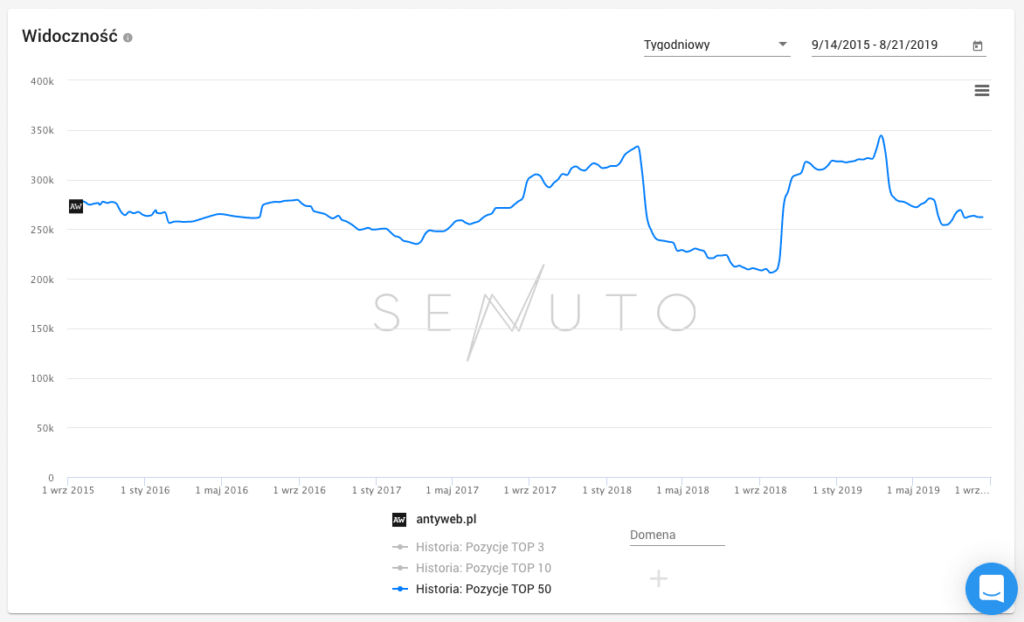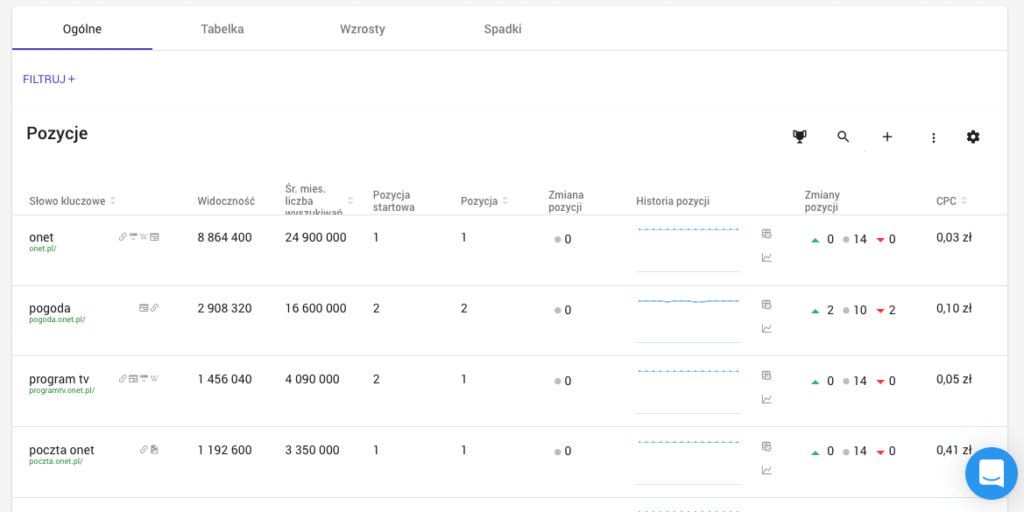You keep hearing about SEO, but don’t quite understand its tenets? You seem to know what it’s for, but you don’t know how it works, not to mention that you’re racking your brain over how it’s done? Learning new things can be overwhelming at first and you don’t know where to start… and when you don’t know where to start, it’s best to start at the beginning! SEO basics are less SEO complicated than you think. What is SEO and what is it all about?
. .What is SEO?
.SEO (from Search Engine Optimization) is the totality of activities aimed at raising your site’s position in Google’s organic search results. In other words, it’s everything you do to make sure your site shows up in top positions in Google for as many key phrases related to your business as possible.
.Why is SEO so important?
. .SEO is important for a simple reason – these days Google accompanies most of us in our daily lives, from morning to evening. We search online for products, service providers and answers to our questions. In 2019, we turn the search engine an average of 7-10 billion times a day! Not bad, right?”
.We ask Google about practically everything – I do, you do, and your potential customers do. When we type a phrase into Google, we express our buying intentions – if not directly (iphone x price), then indirectly (what phone for grandma). Believe me, that’s reason enough to fight for the top positions in search results for your site. Make it so that the products, services or answers to their questions users are looking for are found right on your site. Make yourself known at your best, present your offer and bring the deal to a close. But before you start, familiarize yourself with the basic concepts of SEO, which will help your site display for specific customer queries on Google.
.The benefits of SEO
. .SEO activities bring tangible benefits to your business:
. .- SEO activities will help you reach more potential customers. Every business should be where its potential customers hang out. No matter what industry you’re in, your customers use Google to find information and products that meet their needs. By conducting SEO activities, you increase the likelihood that they will find them right on your site. .
- As part of your SEO efforts, specifically through keyword analysis, you will learn what is popular among customers in your industry. This will allow you to expand your offerings and better understand the needs and preferences of your users.
- Positioning will increase the number of views of your site, and the more visits to your site, the greater the chance of converting a visitor into a customer.
- SEO doesn’t cost much, especially if you compare the cost of such efforts with more traditional marketing campaigns, such as Google Ads. .
- SEO is characterized by an excellent return on investment (ROI). First, properly executed optimization is a source of consistent and high traffic to your site. Second, with a properly chosen SEO strategy, you can target content to a specific audience interested in your products or services. As a result, the exposure of potential customers to your offer is very co high, which in turn should translate into increased sales. .
- Positioning helps increase brand recognition. Even those who don’t buy from you on their first visit may remember your brand. You will aid this process if you additionally implement remarketing activities. Building brand awareness is not an easy task, but SEO will definitely help you. .
- More brand awareness translates into more trust. It’s simple psychology – the more often you deal with something, the more you like it (or at least know it). Have you heard oftop of mind brands? These are the ones that we associate with a particular service or product. Even if a user isn’t interested in buying at the moment, they’ll think of you the moment they’re ready for it. What’s more, many people check out a company online before buying from it, so you need to make sure you make a good impression! .
- Systematically creating and publishing quality content, you increase the visibility of your site in SEO, but also attract regular audiences and collect leads. It’s a good idea to have a content specialist in your company. More visitors to your site means more interest in your newsletters and material published on social media. And this is a very valuable thing! .
- SEO is certainly no stranger to your competition. If you don’t take the subject seriously and cut your budget for SEO efforts despite fierce competition, someone else will take traffic from search results. There are industries where it’s harder to make a name for yourself (finance) and those where it’s sometimes a little easier (entertainment). .
- Thanks to SEO, more people will read your opinion on a given topic. This, in turn, will translate into greater recognition of your brand (including your personal brand) in the industry. You will make new contacts, which in the future may result in interesting collaborations and projects. .
- Your potential employees and contractors also benefit from Google. By ranking high in search results, you can meet people who will want to work with you and change your business for the better.
Key phrases are the foundation of SEO efforts
.
What are keyword phrases?
. .Key phrases are the content of a query typed into a search engine by users who are looking for specific information. It’s a few-word description of exactly what the user needs at any given time.
. .Key phrase types
. .As I mentioned earlier, optimizing for key phrases is the first step to higher rankings in search results. Most general (generic) phrases are already occupied by big brands, making it more difficult for you to break into the top ten results.
.You have a much better chance of achieving high rankings in Google for long tail phrases. These are keywords that consist of several words and are more specific than generic phrases. There is much less competition in this area, and users who search for such phrases generally know very well what they want.
.There are also brand phrases, containing, for example, the name of your company or the brands of the products you sell. There are also local phrases, which include place names – these are queries from users interested in products or services in a particular city. On the other hand, people who know what they want to buy and are on the lookout for the best deal, type in phrases that include the names of specific products or models. These keywords are called product phrases.
. .Check out our guide on keywords!
. .Systematic phrase analysis
. .You need to regularly expand your list of key phrases because your customers’ online behavior is constantly changing. There are many factors that affect the outcome of keyword analysis. Don’t be frightened by seasonal changes in the number of searches for particular phrases! After all, it’s no secret that people are more likely to search for coats in winter than in summer.
.When choosing the best phrases for your site, you need to consider several elements. First of all, consider how relevant the phrase is to your business. Next, check how often it is searched for on Google and which companies are competing for it. It’s also worth understanding the intent of users behind a given query/
.Understand the customer intent and needs behind their search phrases
. .There must be a full understanding between you and your potential customers regarding key phrases. If you don’t take care of this, you’ll create content that hits the bull’s-eye – either not so, or aimed at people who aren’t interested in your offer. Appearances are deceiving, so think about the thought behind a specific query.
. .Make use of tools that will help you find the best key phrases. I encourage you to try Senuto keyword databases. Trust data, not instinct.
.Does the user want to buy? Phrases that express purchase intent
. .Someone who is looking for a particular model of a product and types, for example, “[brand name] hiking boots” into a search engine, adding phrases such as “price”, “discounts” or “bargain”, most likely wants to purchase that product. If you’re running an online store, you need to position your sub-pages for key phrases that signal purchase intent.  In addition, people searching for specific products are more likely to carry intent to buy. They type in phrases such as “product/brand name” next to words like “cheap”, “buy” or “reviews”. They know what they want, and all they are looking for is the best deal.
In addition, people searching for specific products are more likely to carry intent to buy. They type in phrases such as “product/brand name” next to words like “cheap”, “buy” or “reviews”. They know what they want, and all they are looking for is the best deal.
Importantly, keyword phrases signaling commercial intent have a high conversion rate.
. . .Intent of getting information, or the advantages of blogging
. .There are many phrases that indicate that a person is looking for specific information. Information phrases include words like “when”, “why”, “where”, “how”, “news”, “how does it work” and the like. People typing these into a search engine are probably not (yet!) interested in buying your products, but you can convince them with content and information published on your blog.
.Remember that your customers within the purchasing path go through a certain number of stages. Find the right key phrases for each of them and create tailored content for them. This will help you gain a regular audience who will become your customers or share your content further.
. .Even if such audiences don’t (yet!) want to buy anything from you, they can raise your profile in the industry, such as by recommending your company to friends. Having gained a reputation as an expert in your field, you will become an influential player in the market.
.High-quality content can also help you gain inbound links. This, in turn, is an excellent way to improve your position in search results. What’s more, by publishing content centered around a single topic, you increase Google’s trust in your domain. You can read more about this in the article on topical authority.
. .Site-dependent intentions
. If a city name or phrases such as “restaurants nearby,” “map,” “how to get there,” “train station,” “hotel” are included in the query, the user in question is entering a local query. Often, he or she wants to purchase services from a company that has a stationary outlet or scope of business in the area.
If a city name or phrases such as “restaurants nearby,” “map,” “how to get there,” “train station,” “hotel” are included in the query, the user in question is entering a local query. Often, he or she wants to purchase services from a company that has a stationary outlet or scope of business in the area.
This does not mean that you necessarily need to set up a stationary store. If you run a hotel booking engine, you have a good reason to rank high for the phrase “hotels in Krakow”. In your SEO efforts, always focus on understanding what the user needs.
. .Misreading customer intent is often lost revenue
. .Misreading the intent behind your potential customer’s inquiry can lead to lost revenue.
.Each similar mistake is lost revenue, and that’s a painful blow with today’s fierce market competition. Make sure that your SEO strategy takes into account the intent and needs of users. To do this, you need to use more traditional marketing efforts on the one hand, and dedicated tools on the other.
.Gather as much information about your customers as possible! Take advantage of surveys, social media, forum posts, listen in on conversations at industry events and support chat. Use this knowledge and create profiles of your potential customers (personae).
.How to analyze key phrases?
.Now that you know how to read the intent of a user using a search engine, it’s time to discuss key phrase analysis. When choosing the phrases you want to rank for, consider their suitability to the site’s subject matter, difficulty and average monthly search volume.
.The first metric tells you how much competition there is in Google for a given phrase. The second shows how many people type it into the search engine. Determining whether it’s worth trying to rank for a phrase is a matter of metrics and experience. So, if you don’t manage to score first time, try to calibrate your strategy accordingly.
.To perform key phrase analysis, you need the right tool. Start with phrases that you think best capture the intent of people who might be interested in your products or services. It’s a good idea to re-analyze key phrases from time to time and expand your list.
.Using key phrases in published content
. .You don’t need to create separate content for each key phrase you choose. In fact, it is difficult and very time-consuming, if not completely impossible.
.In Google, one subpage often displays for multiple key phrases. Instead, you should group them thematically and only then write an article optimized for your chosen words. Even if you don’t manage to successfully position for all of them, even when the site starts to display for 50% of the phrases, you will gain a lot from it.
.Key phrases should be placed in strategically relevant places. The first paragraph (lead) should contain at least one phrase. You should also keep them in mind in the headings and title of the sub-page. It is also good practice to include the key phrase in the URL and alt tags, describing graphics.
.On the other hand, what’s too much is unhealthy – don’t over saturate your content with key phrases. Google will catch it and condemn it.
. . .Set up what your audience wants to read and watch
. . .See the competition
. .Put the phrase you want to position yourself for into a search engine and see what shows up in the search results. Find out what your potential customers see in the content displayed. The comments section is a great source of verification of their needs. Create content better than your competitors!
. . .Care for quality
. .The priority for Google’s search engine is quality of published content. Google itself has learned to recognize perfectly what users want, so you need to take into account the needs of your audience in advance. Don’t try to force in key phrases or resort to tricks and gimmicks to get ahead of the competition. Quality in SEO above all else! 🙂
. .Evergreen content and news
.Create both evergreen content (evergreen) that will continually attract new audiences (although it’s a good idea to update it from time to time) and content that fits into current industry trends.
.The first type of content is a brilliant solution to build steady traffic to your site according to the principle of “slow but steady”.
. .The second type, on the other hand, may generate traffic faster, but after a month or two (and sometimes even sooner) no one will be searching for the given phrases in Google anymore, so the content will only be “alive” for a while. People who are curious about what’s going on in the industry are usually specialists, so this kind of content can be used to get to know your fellow professionals better and get noticed if you manage to join the discussion.
.Internal and inbound links
. .Incoming links
. .Google takes into account how many domains link (link) to your site, and considers this a sign of quality. Acquiring inbound links is quite a challenge! It’s best if many different sites link to your site, although even here quality is more important than quantity. You need to promote your content to get backlinks from respected sites. Also, be tempted to make guest appearances on other sites.
. . .Internal linking
.Internal linking is the connections between different sub-pages on your site. If you create an extensive network of internal links, you will make it easier for Google’s algorithm to understand the content on your site. This is very important from an SEO perspective!
.Additionally, having a lot of links in published material can make it easier for your readers to find new and interesting articles, and this will make them spend more time on your site. Therefore, both in the body and at the end of the article, add links to thematically related materials.
.More useful tips
.- Care for a good User Experience (UX). Make it easy and efficient for the user to navigate through your site and enjoy browsing.
Even if you think the majority of your audience uses desktop computers, Google still pays attention to whether browsing or a particular site can be comfortably viewed on mobile devices as well. Conduct a mobile optimization test and see how your domain performs on mobile devices.
. .How to optimize your site for mobile devices!
.- Make sure your site loads quickly and is comfortable to use, as loading time is an important SEO factor. .
- As I mentioned above, consider starting a blog. This is a good way to generate additional traffic to your site. Plan your articles according to the data you’ve gathered and your key phrases – don’t rely solely on intuition! Be consistent and publish regularly. If you succeed and your audience (and Google) regularly receive valuable content from you, you will definitely see an increase in organic traffic. One more thing – a blog is also a great way to make new contacts in the industry and build your reputation in it. .
How to measure the effectiveness of SEO efforts?
. .An essential part of SEO efforts is measuring the effectiveness of our efforts. It is worth looking at on an ongoing basis whether the chosen SEO strategy is effective, or whether any element of it needs improvement. What is worth measuring and how to do it?
. .When verifying your SEO progress, always try to monitor several different metrics. If you only rely on one or two metrics, you won’t have the full picture.
.Remember that the values of metrics do not always reflect the effects of your actions alone. A sudden increase or decrease in positions can also be due to increased competitor activity or a change in Google’s algorithms. Tracking metrics is designed to help you understand what caused the change so that you can adjust your actions accordingly.
Tracking metrics can help you understand what caused the change so that you can adjust your actions accordingly. . .
Check out Google’s algorithm changes at Weathermaker.
. .IMPORTANT: SEO progress is rarely seen right away. You have to wait at least a few weeks or even months for the results of your SEO efforts.
Important. . .
Page traffic
. .One of the most important performance indicators of SEO efforts is organic page traffic. This is a simple metric that tells you the overall health of a site. In most cases, to verify the number of page views and its change over time, one uses Google Analytics, where dozens of different reports can be generated. The tool can be easily integrated with other programs.
. .Service visibility
. How is your site’s overall visibility on Google? Has it increased or decreased from last week? You can check the number of phrases in TOP3, TOP10 and TOP50 in Visibility Analysis in Senuto. There you’ll also get a sneak peek at how your closest competitors are doing on Google.
How is your site’s overall visibility on Google? Has it increased or decreased from last week? You can check the number of phrases in TOP3, TOP10 and TOP50 in Visibility Analysis in Senuto. There you’ll also get a sneak peek at how your closest competitors are doing on Google.
Position in Google
.Another metric relates to the site’s position on selected key phrases. Once you decide which phrases you want to position the site for, add them to Monitoring and watch how the site’s positions change. This will help you find out if your efforts are effective, compare your results to your competitors and find places for improvement. 
Number and quality of inbound links
. .Another aspect worth monitoring is inbound links. If a respected site in your industry links to your site, the search algorithm will notice. Google will reward you for this by elevating the site’s positions in search results. In case your SEO strategy involves link acquisition (and it should!), this metric will show the rate at which the number of links is growing. You can check inbound links in the Majestic SEO tool, among others.
. .Time spent on page
. The time a user spends on your site indicates the extent to which it satisfies their needs. If you manage to increase the quality of your content and develop internal linking, you will notice that users spend more time on it.
The time a user spends on your site indicates the extent to which it satisfies their needs. If you manage to increase the quality of your content and develop internal linking, you will notice that users spend more time on it.
Remember, however, that this metric is also influenced by the type of content your audience is reading. Don’t compare long articles to short posts. You can check the average time spent on the site in Google Analytics.
. .What is SEO and how is it done? Summary
Conducting SEO activities brings numerous benefits to all types of businesses, including small and medium-sized ones. SEO involves regularly analyzing key phrases and carefully reading the intentions of users behind their queries on Google. Include your chosen key phrases in your published materials in a thoughtful way, based on hard data.
.The needs of your audience above all else! All the content you publish should be tailored to them. In your SEO efforts, be sure to use the power of inbound and internal links. Also, don’t forget to measure the effects of the implemented strategy. There are many ways to measure the effectiveness of SEO activities, all of which are at your disposal. I especially invite you to take advantage of the benefits Senuto!
.I hope I briefly introduced you to what SEO is and how it is done? 🙂 Good luck!
 Karolina Matyska
Karolina Matyska